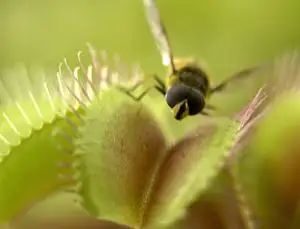Can Plants Hear You? The Curious Science of How They Sense the World

– Shivaan Darda

It sounds like something out of a fairy tale—talking to your plants to help them grow. But as it turns out, this whimsical idea may not be entirely far-fetched. While plants don’t have ears, eyes, or a brain, research shows they can “listen,” “feel,” and “see” in their own remarkable ways.
The Sound of Survival
Plants may not hear music like we do, but they can sense vibrations. In a study from the University of Missouri, scientists found that the ones exposed to the sound of chewing caterpillars produced more defensive chemicals to deter them. Other studies suggest that gentle sound frequencies, like classical music or humming, can stimulate growth in some species. The reason? Vibrations may trigger certain genes linked to cell expansion and nutrient transport.
Light: The Plant’s Guiding Star
If sound is their rhythm, light is their compass. Plants use light not just for photosynthesis but also to “see” their surroundings. Specialised pigments help them detect the direction, colour, and intensity of light, allowing them to bend toward the sun (a process called phototropism). Some even keep track of day and night through internal “circadian clocks,” ensuring they bloom and rest at just the right times.

Touch with a Purpose
Touch a Mimosa pudica—the “touch-me-not” plant—and it folds its leaves instantly. This rapid movement is a defence mechanism, powered by changes in water pressure within its cells. Climbing vines also use touch to find support, wrapping around nearby objects for stability. Even crowded plants “feel” their neighbours by detecting subtle changes in air currents or shading, adjusting their growth to compete for sunlight.
Plants may not chat back, but they are quietly tuned in. And in their own silent language, plants remind us that communication in nature goes far beyond words.